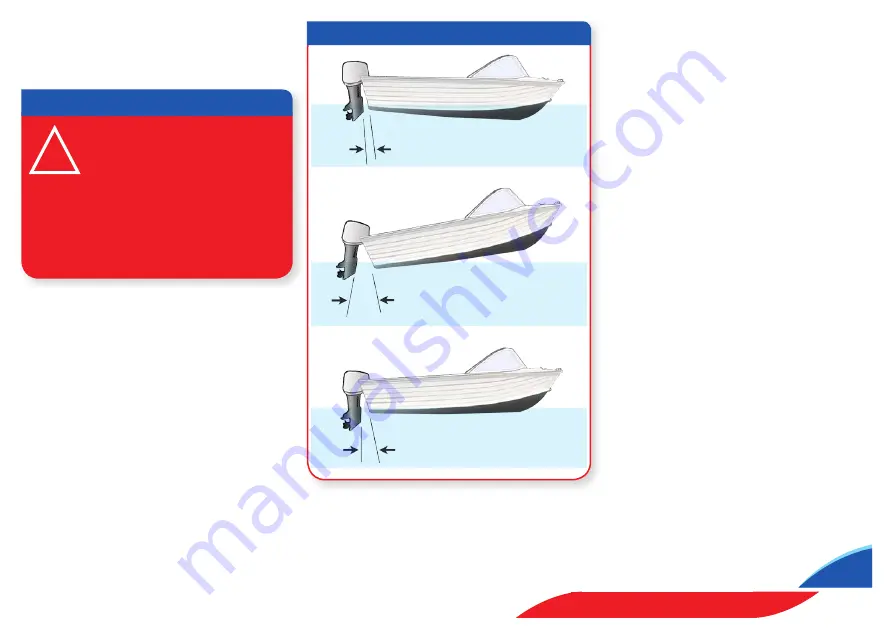
p. 13
Owners Manual
• Transfers steering torque harder to right (or
less to the left).
• Improves planing speed acceleration (by
moving tilt pin one hole closer to transom).
INSTRUMENTS
While under way, instruments should be checked
frequently for possible indications of trouble.
Tachometer (if fitted)
A tachometer is an electrical instrument that indicates
engine Revolutions Per Minute (RPM). The tachometer
is useful for monitoring engine speed to avoid
exceeding the maximum RPM rating. In addition,
it can be used to detect performance changes by
comparing speedometer readings at various RPMs.
Temperature Gauge (if fitted)
The temperature gauge indicates engine coolant
temperature by monitoring a signal from a sending
unit installed in the engine water jacket. When the
gauge reads in the danger area, shut off the engine
and diagnose the problem.
A common cause of overheating is picking up a
foreign object in the water intake. Usually, raising
and lowering the outboard will free it. Backing up
in reverse gear, then pulling ahead in forward gear
for 2 - 3 (two to three) metres is helpful too.
Oil Pressure Gauge (if fitted)
The oil pressure gauge indicates engine lubricating
oil pressure. Low oil pressure readings are generally
caused by low oil quantity. In any case,
immediately shut down the engine and diagnose
the problem.
Fuel Gauge (if fitted)
The fuel gauge indicates fuel level. Since boats are
exposed to rough water conditions and varying
degrees of trim, fuel gauge readings are often
inaccurate. It is always good to keep track of
your running time as a double check against an
inaccurate gauge.
Compass (if fitted)
Many factors affect the operation of your compass,
such as local magnetic variation and deviation
(induced needle deflection caused by metal
components and the operation of electrical
equipment aboard your boat).
Each compass must be “swung’ (compensated)
to adjust for individual boat characteristics, and
for the particular compass installation. It is vitally
important, therefore, that you have your compass
professionally swung before using it for serious
marine navigation. Contact your dealer for more
details.
ELECTRICAL SYSTEM
Battery (if fitted)
The key to a good marine electrical system is the
battery. On some models the condition of the
battery can be read on the voltmetre when the
ignition switch is in the ON position.
With the engine not running, voltmetre readings in
the 11.5 to 12.5 volt range are considered normal.
Readings in the 10 to 11.5 volt range indicate
a marginal charge condition. Readings
below 10 volts indicate a seriously
discharged condition.
Excessive trim out also may reduce the
stability of some high speed hulls. To
correct instability at high speed, reduce
the power GRADUALLY and trim the motor
slightly before resuming high speed
operation. Rapid reduction in power will
cause a sudden change of steering torque
and may cause additional momentary
instability.
ATTENTION
!
TRIMMING THE ENGINE
INCORRECT
Trim causes Boat To ‘plow’
CORRECT
Trim Gives maximum performance
INCORRECT
Trim causes Boat To ‘porpoise’










































